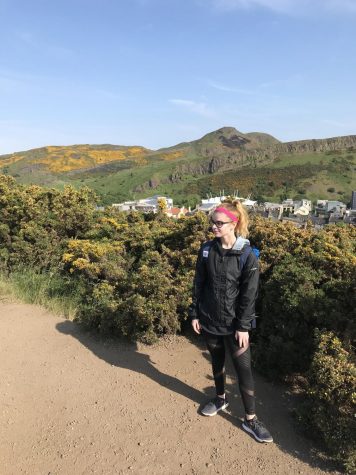Once again, zoos found to be no good for the animals
February 4, 2019
Zoos serve as an enjoyable afternoon activity during the spring and summer months, but unbeknownst to the public, the animals enclosed suffer the consequences of a failed system. Children run around with their parents, excited to explore and learn about the different types of animals that reside around the globe. However, young children lack the ability to recognize that the animals they awe over remain stuck in confined pens on a daily basis. These animals, more often than not, never gain exposure to their natural habitats and grew up surrounded by the unnatural environment of zoos.
Of course, a natural, sufficient amount of space for the animals does not exist in zoos, making it difficult to house the increasing amount of animals. According to Freedom for Animals, large animals, such as lions and tigers, live in around 18,000 times less space than they would in the wild. Larger animals possess the ability to roam as far as the eye can see in the wild, but in zoos, these animals can only travel as far as the fenceline that holds them captive.
In addition, a condition known as “zoochosis” affects 80 percent of animals held in zoos. Symptoms of zoochosis drive animals to rock, sway, or pace endlessly, which for a handful of animals results in self-harm. Certain creatures may begin to rely on chewing their own fingers or limbs and will even pull out their own fur or feathers. Other behaviors of zoochosis include neck-twisting, tongue playing, vomiting, and head bobbing. These coping mechanisms indicate that zoos truly take a negative effect on animals held in captivity.
Zoos should serve as a last resort for animals in need. Rehabilitation centers for injured species should replace zoos by doing exactly what the name says: rehabilitate. By rehabilitating injured animals and then releasing them back into their natural habitat, rehab specialists will earn a better reputation with the public. Additionally, the number of encaptured animals will lower dramatically.
However, some may argue that zoos uphold positive incentives for animals and humans alike. Zoos educate the public about issues wildlife face back in their natural environments and how the public can aid in preservation. Endangered species become part of breeding programs to aid in reproduction. Rare species benefit from breeding programs at zoos due to the difficulty finding mates in the wild because of the threat from poachers and predators. Breeding programs ultimately want to release these endangered animals back into the wild to increase genetic diversity. While zoos do hold certain positive values, the bad certainly outweighs the good in this situation.
Much like zoos, aquariums and parks like Seaworld continue to endanger animals further. Seaworld became notorious for Shamu the Whale and their poor treatment of her. The original Shamu came from the wild in 1965. At only three years old, whalers captured Shamu and killed her mother. Seaworld San Diego bought Shamu; while there, Shamu experienced food deprivation in order to teach her tricks for the first ever Orca show in the world. Shamu performed in these shows until an incident in 1971, where a park employee rode on her back and fell off, ultimately leading to Shamu clamping down on the employee’s leg. The employee required more than 100 stitches after the incident. Normal, non-violent whale behavior typically includes using their blowholes, fin-slapping, and most importantly, spy-hopping. Whales use spy-hopping as a way to watch for predators with their eyes along the water line, but they never attack unless they feel threatened. Shamu’s unconventional behavior exhibits how captivity changes normal animal behavior to ravenous, uncontrollable behavior.
As a whole, the ethics behind the idea of zoos appear to hold positive values. However, zoos fail to execute on their supposed ethical reasons behind the business. Zoos promise to keep endangered animals safe from extinction, but unknown to the public, zoos typically keep non-endangered species within their borders. In order to aid endangered species from extinction, zoos should invest in habitat protection rather than holding captive, innocent animals in order to make a quick buck off of families. The beautiful wildlife born into nature belongs in nature itself, not in the confines of a zoo.







